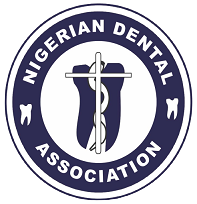Dental caries pattern of first and second permanent molars and treatment needs among adolescents in Lagos
DOI:
https://doi.org/10.61172/ndj.v15i2.191Keywords:
Caries pattern, Permanent molars, Urban adolescentsAbstract
Objective: The study was carried out to assess the dental caries pattern of first and second permanent molars and treatment needs among adolescent Nigerians in Lagos.
Method: Examinations for dental caries and treatment needs in accordance with the criteria of the World Health Organization Basic Methods for oral health surveys were carried out among six hundred 11-16 year-old urban Nigerians (307 boys and 293 girls) from six schools in Lagos.
Results: A low caries prevalence rate and severity was found in this study. Only 421(2.5%) teeth were carious in 143(23.8%) subjects. First permanent molars had the highest caries prevalence rate (9.3%), followed by second permanent molars (7.8%), while premolars (0.13%), incisors (0.08%) and canines (0%) had the lowest rates. Pit and fissure caries on occlusal surfaces was the most prevalent lesion as evidenced by the fact that one-surface filling was the commonest restoration need among the subjects. Caries prevalence rate was higher in the lower jaw than upper jaw but similar on left and right sides of each jaw.
Conclusion: There was a higher caries prevalence rate in the first permanent molars compared to the second permanent molars in this study contrary to previous Nigerian studies. This suggests a change in lifestyle and diet towards consumption of sugars at an earlier age when these teeth are still very susceptible to caries.
Downloads
Downloads
Published
Issue
Section
License
Copyright (c) 2007 D. C. Umesi-Koleoso

This work is licensed under a Creative Commons Attribution 4.0 International License.
Open Access Statement
- We became fully Open Access since January 2023.
- Our new and archived materials are available free of charge on open basis and under a Creative Commons license as stated below.
Copyright statement
Copyright © 1999 The authors. This work, Nigerian Dental Journal by Nigerian Dental Association is licensed under Creative Commons Attribution 4.0 International License.

